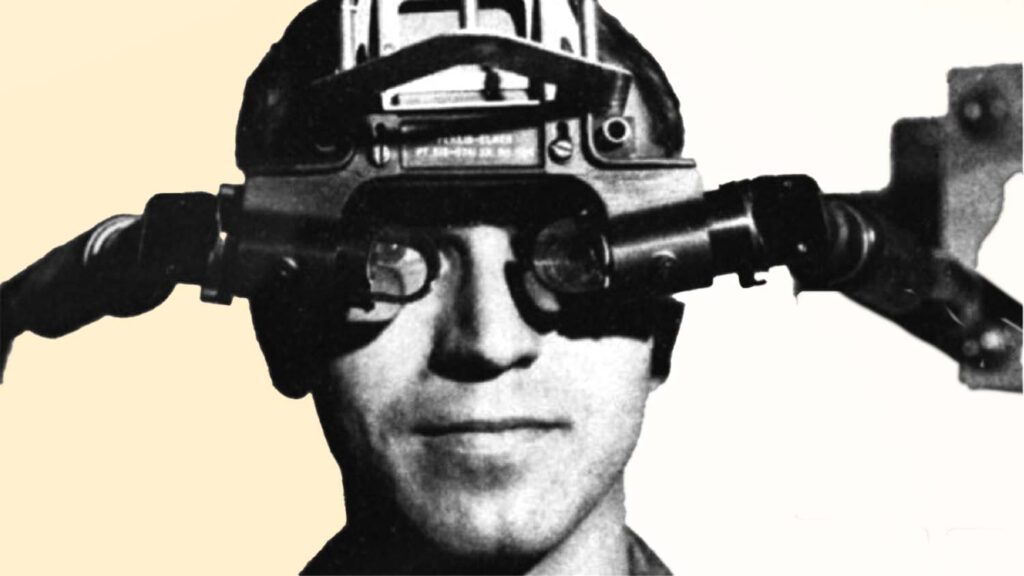‘Shift’, ‘disrupt’, ‘game-changer’, ‘convergence’, ‘paradigm’: All buzzwords that appeared in Al Dean’s email inbox this month. But having looked at the work of pioneers like Ivan Sutherland, he wonders: can anything truly be considered ‘new’ these days?
I came across a marvellous Twitter thread recently. It hooked me in with a single tweet, and then unrolled with some really great content – not just a plug for somebody’s SoundCloud. If you use Twitter, you’ll know what I mean. If you don’t, let me explain.
Morgan McGuire (@CasualEffects) was tweeting about Ivan Sutherland, a true titan in the graphics computing industry. Sutherland’s research ran the gamut of pioneering graphics, pen-based input, early CAD with Sketchpad (aka Robot Draftsman), geometric constraints and more – all covered in his PhD thesis, written in the early 1960s.
He went on to explore virtual reality head-mounted displays and founded one of the first graphics processing-specific companies, Evans and Sutherland, in the late 1960s.
Morgan’s Twitter thread also discussed “the graphics wheel of reincarnation”, first described by Sutherland and his colleague Theodore Myer in the late 1960s. As McGuire so eloquently puts it, this concept observes that, “every ten years or so, the same ideas come back into popularity in graphics. Such as: fixed function shading, vector processing and ray tracing.”
Of course, this got me thinking about the tools and technologies we write about each month and that you, our readers, use on a daily basis. How many times have we all, as a collective, been told that the Next Big Thing is coming down the line; that we need to prepare ourselves for revolution it will trigger; and that anyone who doesn’t immediately jump on the bandwagon is either a laggard or a Luddite?
Just this month, I’ve had press releases proclaiming the coming revolution, trumpeting that a paradigm shift is taking place. On the face of it, the marketing folks are doing a stellar job of taking a product release and spinning it up as The Second Coming.
But the reality is that, just as Sutherland discussed with the Wheel of Reincarnation idea, many of the ‘advances’ we see today and perhaps marvel at aren’t really advances at all, but rather, a reworking of existing ideas. Want an example? You’re in luck. I have two.

The iPad revolution & CAD: I love Shapr3D. I think it’s ace. When running on Apple’s hardware, the combination of tablet and pencil really sings. It’s a portable, clean and efficient way of sketching out ideas and thinking in three dimensions.
Is the team at Shapr3D doing an excellent job keeping of the systems clean and efficient as features and functions increase? Absolutely.
But is it a platform shift? Not really. Is it something brand new? Absolutely not. Anyone who’s been in the tech industry long enough knows that pen-based input has been around since the dawn of computing. It’s been an established part of interacting with CAD for decades.
The same goes for tablets. Yes, they’ve got slicker. Yes, they’ve (arguably) got cheaper. Yes, your Gran could probably use one. But new? Nope.
CAD on the cloud: I’m sure we’ve discussed this one before. Whether you call it cloud CAD, cloud-based design, software-as-aservice (SaaS) or something else entirely, you can’t escape the idea that unless you’re running your CAD system permanently connected to remote computing infrastructure, then you’re somehow living in the Dark Ages.
No matter how many baffling, social media-like ‘collaboration’ services you layer on top of it, or how much you charge per 10 GB of storage, it’s just the same CAD system (give or take), running on someone else’s computer
Don’t get me wrong: I love me some Fusion 360 or some Onshape. I love logging into that fresh Azure instance and firing up a CAD system.
But this really isn’t a revolution. It’s not even a slow rotation. As a good friend of mine (hi, Sean!) said recently, “It’s just a CAD system, but one that’s running on someone else’s computer”.
Again, these things have all been seen and done in the past. Perhaps less efficiently and certainly less cost-effectively, but the idea of accessing a CAD system via a thin client, and relying on centralised storage and data management, isn’t the paradigm shift the software vendors like to pretend it is.
No matter how many baffling, social media-like ‘collaboration’ services you layer on top of it, or how much you charge per 10 GB of storage, it’s just the same old CAD system (give or take), running on someone else’s computer.






